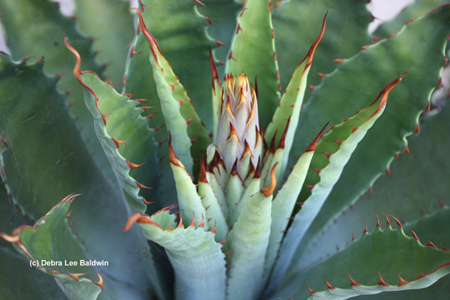
I’m going to miss my toothy Agave potatorum, shown here beginning to form a bloom spike. When an agave flowers, it is not a happy event, unless you’ve been waiting forever to collect its offspring. Agaves are monocarpic, meaning they die after flowering.
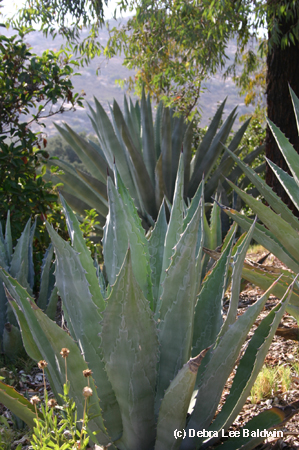
Agave americana, the most common agave in the Southwest, has the common name “century plant” because it supposedly takes a century to bloom. Actually, it’s 15 to 20 years…sooner, if you pamper it with rich soil and ample water. (Moral: If you grow Agave americana, be mean to it.)
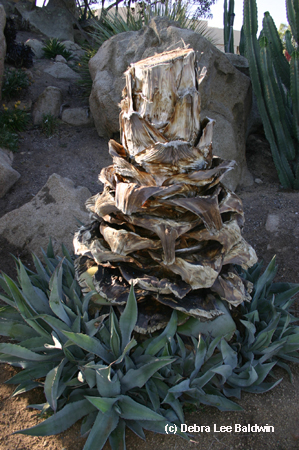
Agave americana‘s stalk is about the diameter of a telephone pole and nearly as tall. The drooping, lifeless leaves of this bloomed-out specimen have been trimmed to a pineapple-like trunk. At its base grow pups of the mother plant. Agaves are nothing if not determined to reproduce.
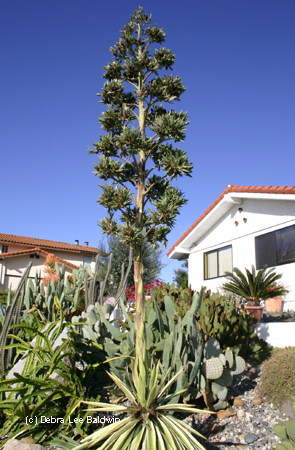
Notice the size of the bloom stalk of Agave angustifolia ‘Variegata’ relative to that of the mother plant.
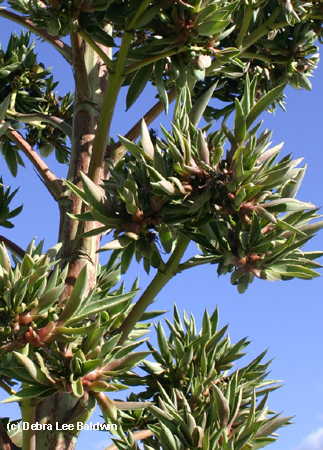
When the spike emerges from the center of the agave rosette, it resembles an asparagus spear. This branches and produces masses of nectar-rich flowers that attract hummingbirds and bees. Agave nectar, now sold in many supermarkets, is a popular natural sweetener. It’s similar to honey but dissolves more readily in cold liquid and is not as strongly flavored.
The blossoms on the bloom spike form bulbous little plants. Each branch cluster holds dozens. As the mother agave dies, it can no longer support its towering stalk. When this topples, it efficiently propells the offspring to the earth.
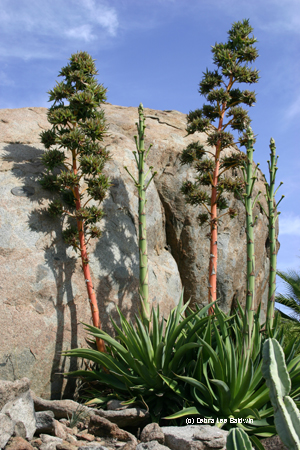
Agave desmettiana bloom stalks turn from green to red as they mature. Most of the agaves in this clump decided to bloom at once.
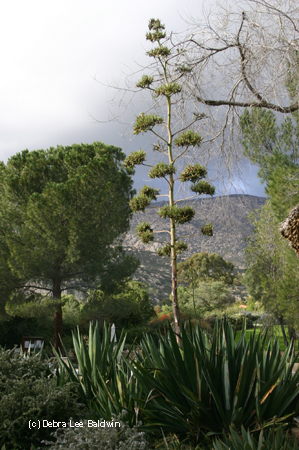
This is Agave tequilana—the agave tequila is made from. In Mexico’s commercial agave fields, the plants are harvested at about 7 or 8 years of age, when they are full of sugar in preparation for flowering.
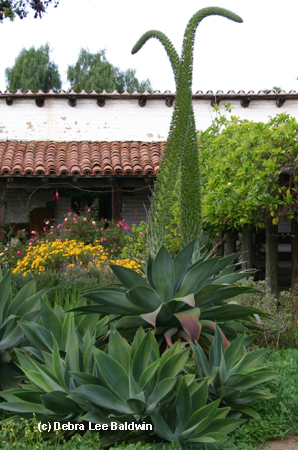
The bloom spikes of most species of Agave are treelike, but those of Agave attenuata are unbranched.

Blossoms open from the bottom up. The appearance of its long, curved stalk earned Agave attenuata the common name “foxtail agave.”
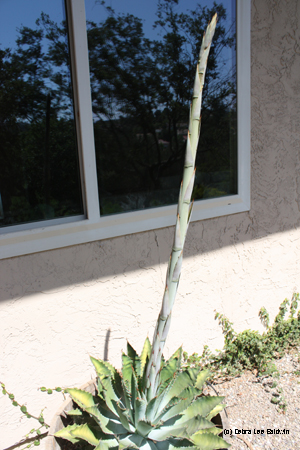
I’m often asked if you can stop an agave from blooming by severing the stalk. Unfortunately, no. The same chemical changes that cause it to flower also kill the plant. This is the same plant shown in the top photo. The stalk, now about 5 feet tall, has grown a foot a week and is as yet unbranched. I’m going to sit back and enjoy the show…while deciding what to do with a thousand baby plants.
My goal is to share the beauty of waterwise, easy-care succulents in gardens, containers and landscapes via blog posts, newsletters, public speaking and workshops, photos, videos, merchandise, and social media (Facebook and Pinterest). My books: Designing with Succulents, Succulent Container Gardens, and Succulents Simplified. www.debraleebaldwin.com
